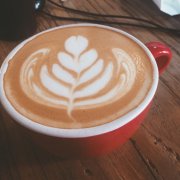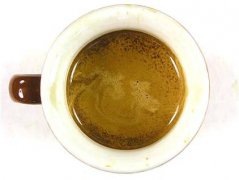Drying and washing in the process of producing and processing coffee beans

Coffee beans have to go through the removal of skin, pulp, racing peel and silver skin before shipping to market. There are two kinds of methods: drying (also known as natural or non-washing) and washing.
Dry type:
The method is relatively simple. First, spread the freshly harvested fruit on the sun field for a week or two until the fruit crackles. After drying naturally, use a sheller to remove the dried pulp, endocarp and silver peel.
Coffee beans refined in this way are slightly sour and slightly bitter. Almost all coffee beans produced in Brazil and coffee beans in Ethiopia, Yemen and other places are obtained in this way. The disadvantage of this method is that it is easily affected by the weather and is easy to be mixed with defective beans and other impurities. Therefore, it must be carefully screened.
Washing type:
Put the harvested fruit into a flowing tank, remove the floating fruit, and peel off the skin and flesh with a pulp remover. Then put it in the sink to remove the emerging pulp. After that, move into the fermentation tank, soak for half a day to a day, and then dissolve the gum on the surface of the fermented coffee beans.
After washing with water, drying it for a few days, drying it by machine, and finally using a sheller to remove the endocarp to become raw coffee beans that can be used as a commodity. In this way, it has a better color and less impurities than dried coffee beans. Colombia, Mexico, Guatemala and other countries use this method for about 70% of their coffee.
Judgment of appearance
Delicious coffee can be known from the shape of its roasted coffee beans. Of course, there can not be bad coffee beans mixed in, it is more important to note that normal beans will also be mixed with high-quality coffee beans and cause hindrance. A coffee bean that can brew delicious coffee must, first of all, be fat and crepe evenly, followed by the same size and colorless spots. These are the main points of visual discrimination, and it is not difficult to distinguish them if you look at them carefully.
Bad bean species
Fermented beans fermented coffee beans that fall from the soil before harvest. The moldy smell will have a great impact on the taste of coffee.
Dead beans, also known as unripe beans, or affected by climatic factors, the development is not perfect. Fried spots will be produced after baking, making the coffee have a green and astringent taste.
Black beans fermented beans, coffee beans that have rotted and blackened. Because it is black, it can be distinguished from normal coffee beans at a glance.
Moth beans Coffee beans infested by insects.
Defective beans may be stuck during work, or carelessly handled during handling, resulting in incomplete coffee beans. There are fried spots when baking, and will produce bitter and astringent taste.
Other remaining thin-skinned beans, stunted beans, dried beans that do not completely produce moldy flavor, only shell beans (shell beans)
Important Notice :
前街咖啡 FrontStreet Coffee has moved to new addredd:
FrontStreet Coffee Address: 315,Donghua East Road,GuangZhou
Tel:020 38364473
- Prev

The skill of milking in fancy coffee
When filling the steam, you must turn up the steam at one time, so that the steam can blow the milk in the milk tank to form a vortex. To control the temperature of the milk, why is it that if the milk temperature is too high, the effect of milk foam is not good? this is because there is a kind of glue in the milk, which is dissolved at low temperature, and affected by the temperature, the colloid will coagulate and change from the sol state to the sol state.
- Next

With regard to the water temperature of coffee, what is the most appropriate temperature for coffee?
In fact, I spent about a day thinking about how to answer this question. It's not that the problem is unfathomable, but that we receive too much information. As you are familiar with, coffee is best at 85, or in many business training sessions, the coffee machine is set at 96. There are also some textbooks that say coffee is better at 92. If you just want to know the result,
Related
- What is the meaning of lactic acid fermentation with coffee bean treatment?
- How to judge the state of foam by sound?
- How does the latte pull out the unicorn pattern? Come to get for a little trick to improve the flower pull!
- Will flower pulling affect the taste of the latte?
- Do you know the history of coffee?
- The difference between honey treatment and sun washing what is raisin honey treatment?
- What kind of milk can a novice use to make coffee foam to keep the foam longer? The correct method and skills of milking tutorial sharing
- Why do washed coffee beans taste sour? Flavor characteristics of washed Coffee
- Introduction to the skill of how to practice the size and height of water injection around the circle of hand-brewed coffee
- How do beginners practice coffee flower drawing from scratch?

